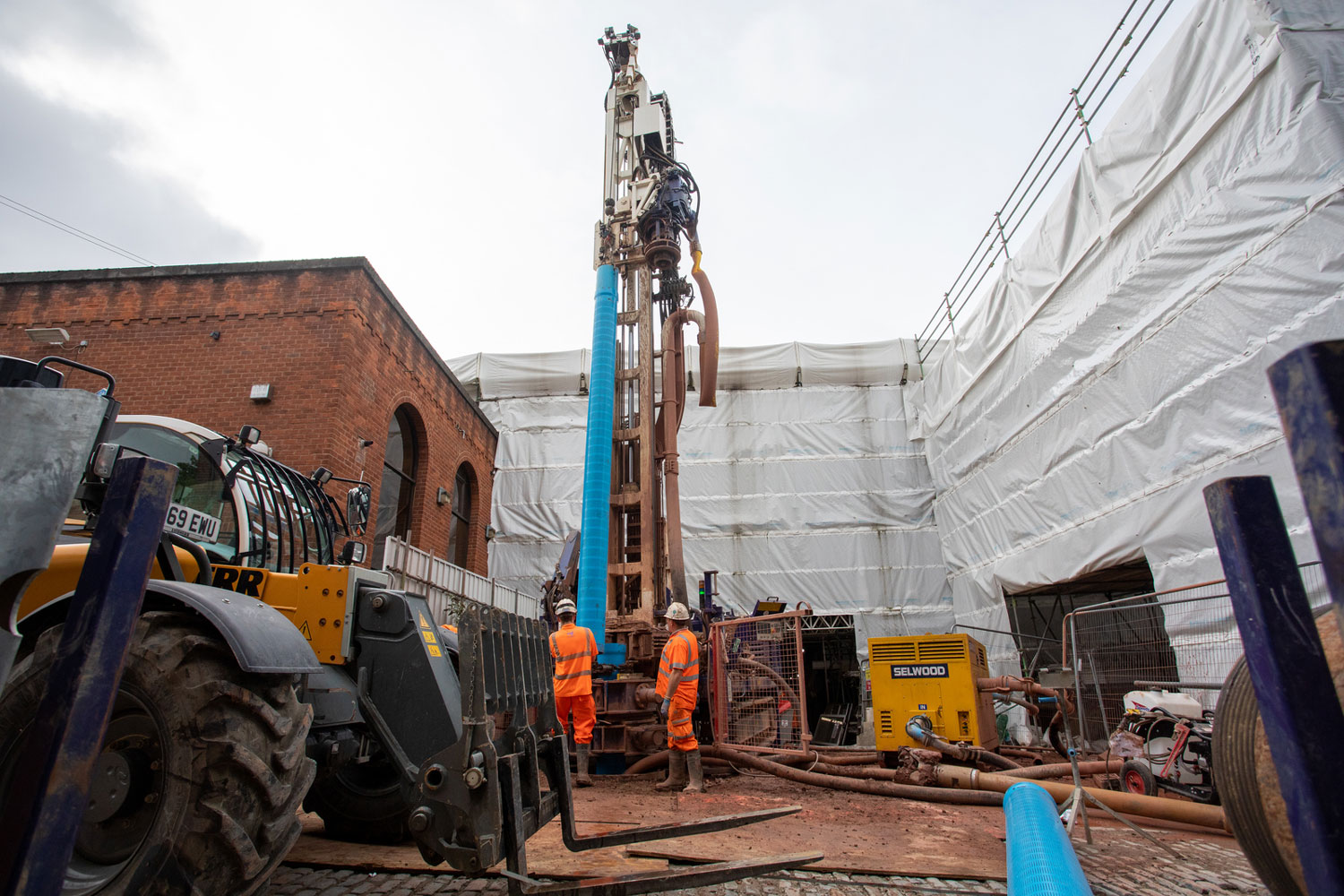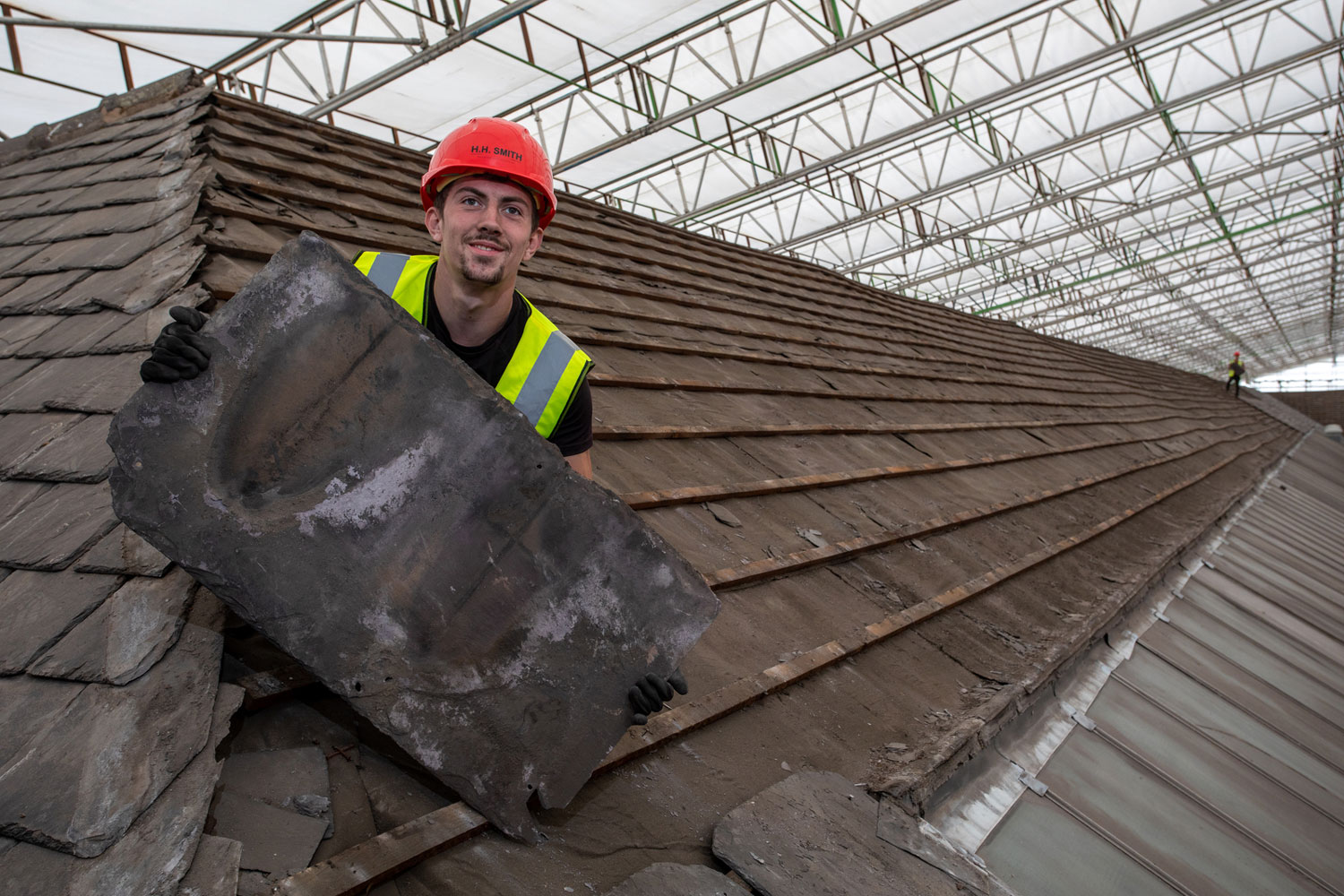The giant borehole drilling rig manoeuvred recently through the gates of the museum is the latest arrival on a site steeped in engineering and industry. The museum is located on the site of the world’s oldest surviving passenger railway and in 2030, the site will mark its 200th anniversary. Over the next few years, the Science and Industry Museum is undergoing a multi-million-pound restoration programme to carry out crucial conservation work to ensure that it will offer a world-class experience for everyone who lives in and visits Manchester.

Image credit: Jason Lock, copyright Science Museum Group
As part of this redevelopment, the Science and Industry Museum is delivering a sector-leading decarbonisation scheme, harnessing green technology to heat its historic spaces. This visionary project will place zero carbon technologies at the heart of the visitor experience and create a sustainable museum for the future.
Work is underway to transform the museum’s environmental sustainability, improve energy efficiency and lower carbon emissions, supporting our goal to become carbon neutral by 2033 and Greater Manchester’s goal to become carbon neutral by 2038—12 years ahead of the national target. This has been made possible thanks to a £4.3 million award from the Government’s Public Sector Decarbonisation Scheme, administered by Salix Finance.
In the 1800s, a well was constructed in the basement of the museum’s Grade I listed 1830 Warehouse, to harness the power of the ground water. This natural resource is now once again being utilised through the installation of a new water source heat pump network. The borehole drilling rig has drilled through rock 85 metres into the ground (a depth almost equivalent to the height of Manchester Town Hall clock tower) to enable water to be extracted and re-injected into the ground. The water will be used to heat both the 1830 Warehouse and the museum’s iconic Power Hall.
In order to lay the network of pipes below the ground, a painstaking exercise of temporarily removing the listed cobbles is underway, which allows pipes and cables to be fitted in new trenches underground. All the work on this historic site is being delivered with care and attention, working with specialists to ensure that the heritage of the buildings and the public spaces are preserved.
It is a visionary project where the original and modern meet. We want to inspire our visitors and know that to create future generations of engineers and innovators the story of the next industrial revolution powered by green energy should be told. It is with this in mind, that the new green technology will be on display in the Power Hall for visitors to see, alongside the historic engine collection. The funding we have received will place carbon literacy and zero carbon technology at the heart of the museum’s story and visitor experience, transforming the Power Hall into a landmark symbol of the past, present and future of industry.
Built in 1855 as the shipping shed for Liverpool Road Station, the world’s first purpose-built passenger railway station, the Power Hall is one of the most beloved industrial heritage galleries in the country. It houses Europe’s largest collection of working engines built and used in Manchester. Visitors will be able to see a fantastic variety of engines, from stationary engines large and small from the factories, workshops and even bakeries of industrial Manchester to towering steam locomotives made in Manchester to haul passengers and goods across the world.
Upgrades are also taking place to the Power Hall roof and windows, including fitting sustainable insulation to the Power Hall roof. In order to do this the contractors at HH Smith have been removing hundreds of the original slates from the roof one by one with care, so that the majority of them can be reused. The installation of a new higher-capacity substation is a key milestone within this project as well as a new electric boiler to power the working steam engines in the Power Hall more sustainably.

Image credit: Jason Lock, copyright Science Museum Group
Together, this work to insulate and power the museum with green energy will save 515 tonnes of carbon per year across the entire site.
Alongside the decarbonisation programme, the Grade II listed Power Hall has received a generous £6 million grant from the Department of Digital, Culture, Media and Sport (DCMS) as well as funding from the Science Museum Group, to carry out urgent and major repairs to the building and redisplay the gallery, to show how Manchester changed the world through industrial innovation.
The Power Hall is due to reopen in 2025 and will be a multi-sensory experience, full of the sounds of these huge machines, the whistle and smell of steam and the incredible personal stories that are behind them. It will show how Manchester provided the power that changed the city and the world and will bring the story up to date by showcasing modern green technology.